Last updated on July 9th, 2025 at 06:06 pm
Normally, our muscles are soft and flexible. However, due to various reasons, the muscle can become a hard band. Muscle knots are tender spots present on these hardened muscle bands that cause local pain.
This is often referred to as a different location, making it difficult to pinpoint the origin of the pain.
Based on my 15 years of experience as a physiotherapist, I have noticed that muscle knot formation is most common in the upper back area, on the sides of the shoulder blades.
You can feel the bump/tight band over the area between the neck and the medial angle of the shoulder blade.
This article will provide insight into muscle knots, including their anatomy, how they form in the body, their symptoms, and how to eliminate them. So, let’s begin.
What Are Muscle Knots? (Myofascial Trigger Points Explained)
Muscle knots are medically known as myofascial trigger points. A myofascial trigger point is a hyperirritable point in skeletal muscle that is associated with a hypersensitive palpable nodule1.
Many of you might question, are muscle knots real?
During our physiotherapy examination, we can detect the palpable nodule, which is tender and hyperirritable when we exert pressure on our thumb.
A trigger point consists of several contraction knots, which are segments of muscle fibres with significantly contracted sarcomeres and increased diameter2.
Muscle Knot Symptoms: How to Tell If You Have Myofascial Pain
If you are experiencing dull, aching pain in your upper back and neck, it may be due to muscle knots. Muscle knots are not limited to the shoulder blade area; they can also form in the thigh, calf muscle, buttocks, and occiput region.
Most of my myofascial trigger point pain cases come to me with complaints of deep, dull, aching pain in the upper back area, sometimes radiating to the arm and forearm.
Often, the sufferer is a computer professional or student who must work longer hours in front of the computer. A posture that requires sustained or repetitive low-level muscle contractions, including shoulder blade and neck muscle contraction.
You can avoid this pain by sitting properly or using desktop ergonomics.
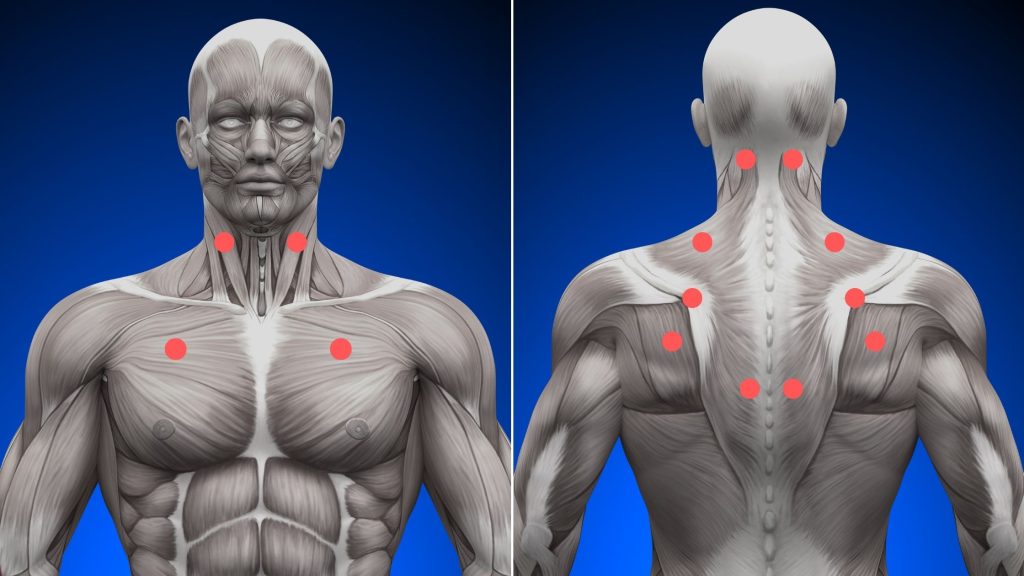
Referred pain is the most prominent symptom of all. For example, the symptoms of knots in the shoulder blade area cause pain all over the upper back muscle and referred pain to the outer side of the shoulder and arm.
Muscle knot formation can occur on any muscle of our body, but these areas are most commonly seen in the Neck, Shoulder & trapezius on the upper back, Foot, Buttocks, Thigh and calf muscles.
Common symptoms include
- Muscle knot pain is dull, deep-aching pain that will keep irritating you.
- Pain is spread over the region, and it isn’t easy to pinpoint the exact location.
- These are deep-seated pains that result in pain when active.
- It often becomes active in cold and moist weather.
What Causes Muscle Knots? (The Science Behind Trigger Points)
There’s general agreement that any muscle overuse or direct trauma to the muscle can lead to the development of trigger points. Muscle overload is thought to be the result of2:
- Sustained or repetitive low-level muscle contractions,
- Eccentric muscle contractions and
- Maximal or submaximal concentric muscle contractions.
Out of these three causes, the first cause is the most common reason for forming muscle knots. So, let us find out what happens to muscle when subjected to sustained or repetitive low-level muscle contractions.
Cause #1: Poor Posture & Repetitive Strain (Desk Job Warning!)
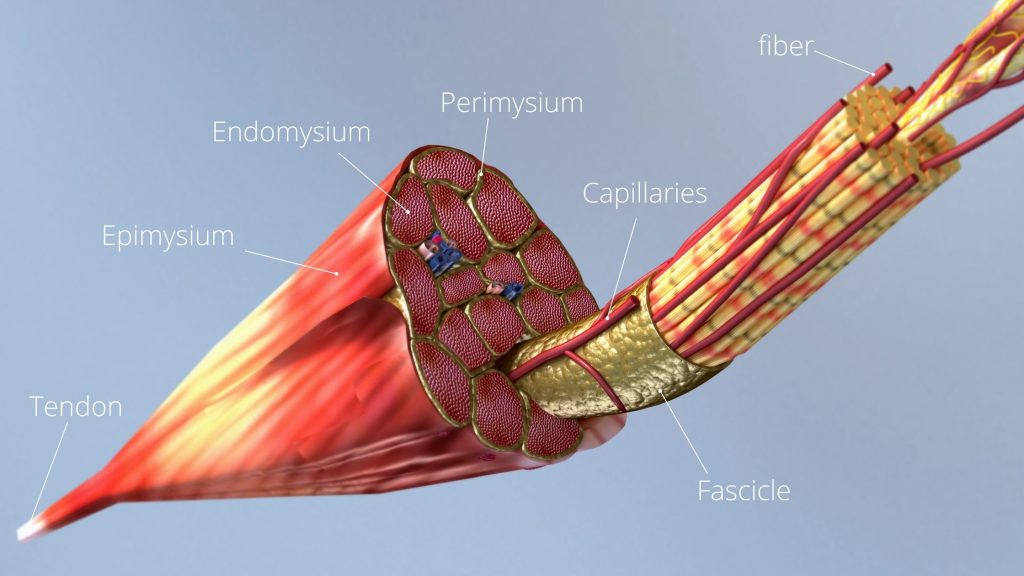
Let’s try to understand this with an example of a person involved in a long-hour desk job. In desk jobs, we often bend our necks to get a clear view of the computer screen.
This posture requires sustained or repetitive low-level muscle contractions of the neck and upper back muscles (the muscles between the shoulder blades).
If we know the basic anatomy of muscle, the capillary system passes through the muscle fibre to supply oxygen and other nutrients to work correctly.
When our muscles contract, the blood flow in the capillaries is briefly blocked; however, this is normal, and the flow recovers quickly once the muscle relaxes.
This process is called the muscular pump, which helps increase blood flow within the muscle during rhythmic contractions. But when we contract our muscles for a long time, they need more oxygen and glucose than they can get, which can cause problems2.
When muscle fibres stick together, they can become tight and form a taut band called a myofascial trigger point. Muscles comprise millions of these fibres that bundle together to form large groups.
Think of it like strands of rope bundled together to make a giant rope. These fibres are free and flexible in healthy muscles because they have good blood flow. But when they adhere to each other, they form trigger points that can cause discomfort.
Understanding how muscles work and the causes of trigger points is essential to maintaining good muscle health.
Other common causes are
- Sedentary lifestyle
- Muscle overuse
- poor posture
Cause #2: Overuse & Eccentric Contractions (Athletes Beware)
Contrary to the above cause, myofascial pain syndrome also affects active personalities like athletes, sports personalities and people involved in agriculture/ farming activities. The cause of muscle knots in these people is repeated eccentric muscle contraction.
In an eccentric muscle contraction, there is an increase in the length of the muscle.
Let me simplify this with an example of bending and straightening the elbow joint, holding a 2 kg dumbbell.
When we bend our elbow with a dumbbell, the biceps muscle contracts concentrically, reducing its length. But when we straighten our elbow in a controlled manner (holding the dumbbell), the biceps contract again.
However, this time, it is eccentric muscle contraction with lengthening of the muscle.
Athletes are repeatedly subjected to eccentric contraction, resulting in trigger point formation. The mechanism is the same muscle pump as described in the previous cause.
How to Relieve Muscle Knots: 3 Proven Myofascial Release Methods
One can quickly get rid of muscle knots with simple home tips. One of the home tips I usually suggest to my patients is self-massage using a tennis ball; almost all have reported improvement.
Other efficient tips involve applying hot fomentation. All these tips aim to soften the taut muscle band.
So, let us start with our first tip.
Tennis Ball Massage: Step-by-Step Guide to Release Muscle Knots
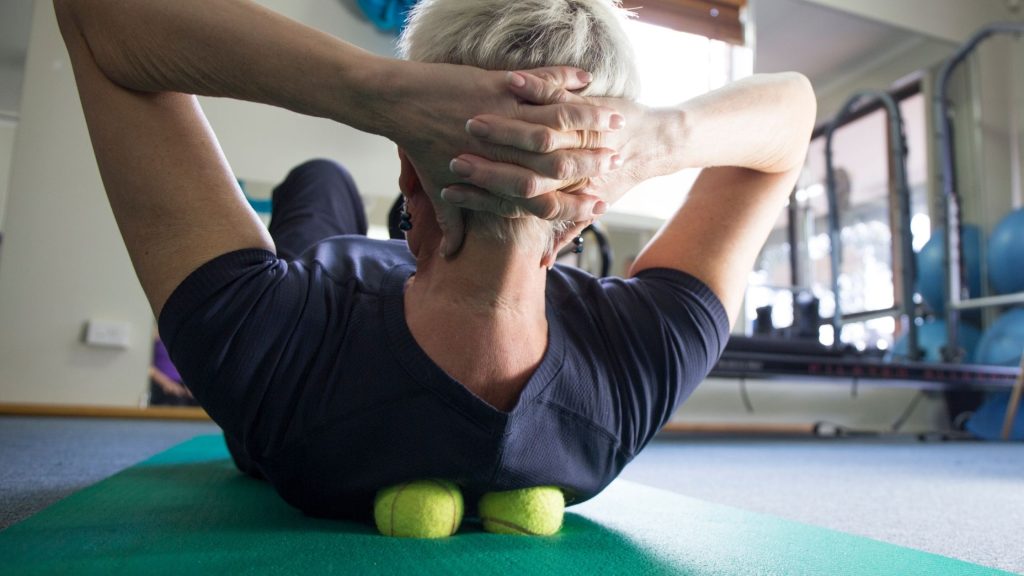
These are some very effective home tips that anyone can learn quickly. The beauty of this self-massage is that it can provide almost immediate relief.
- To get started, you need a simple tennis ball. We’ll use the ball to gently massage any tight muscles to free the fibres from each other.
- Let’s focus on the muscle knots on our upper back around the shoulder blade. Begin by placing the ball on the mattress and lying down on your back to position the ball around the upper back area.
- Then, roll the ball and try to place it under the painful area, which could be around the shoulder blade.
- Move your upper trunk back and forth to gently massage that area.
- After a few minutes, change the ball’s position to other tender points and repeat the process.
- This same process can be applied to any body part, such as the buttocks, lower back, calf muscles, etc.
- LOW PRESSURE: These low pressure training tennis balls are designed for reduced bounce so players can practice their sho…
- TRAINING BALLS: Great for adults learning the basics of tennis. This set is designed to help players get on the court an…
- ALL SURFACE: Constructed for play on all court types so you can practice on hardcourt, clay, or grass courts

Best Stretches for Muscle Knots (Instant Relief!
Regular stretching exercises are very effective in managing myofascial pain syndrome. In particular, sustained stretching is more effective immediately, followed by tennis ball self-massage (ischemic pressure)3.
Follow the stretching exercises twice daily as mentioned in the article “Quickly Fix Achy Muscle Of Back, Leg, Calf| Follow These 7 Easy Stretching“.
Heat Therapy for Muscle Knots: How to Use Hot Fomentation Safely
I highly recommend applying hot fomentation over that area immediately after the self-massage. If you are unsure, I will describe the proper way to apply hot fomentation. But do you know why the muscle bands form?
The process is straightforward. Heat a bowl of water to 45 to 50 degrees. Next, take a clean and dry thick towel, dip it in warm water, squeeze it, and place it over the painful area. After a few minutes, when the towel loses warmth, dip it in the water again, squeeze it, and place it.
Repeat this process till the water comes to an average temperature.
For many, this process would be too tiresome. For them, I would recommend Infrared Lamps. It is just a kind of plug and uses a heating device, which is very easy to use. Alternatively, you can use an electric heating pad or hot water bag.
Keep reading: TENS can be wonder for Fibromyalgia Pain|Study
Muscle Knots FAQ: Your Top Questions Answered
The author is a physiotherapist who has been practising for the last 17 years. He holds a Bachelor's in Physiotherapy (BPT) from SVNIRTAR (Swami Vivekananda National Institute of Rehabilitation and Research), one of the prestigious physiotherapy schools in India.
Whatever he learns dealing with his patient, he shares it with the world through blogs and e-books. He also owns a YouTube channel, "Sunit Physiotherapist" with over 8 lakh active subscribers. Here, he shares everything he gets to learn serving the patient.



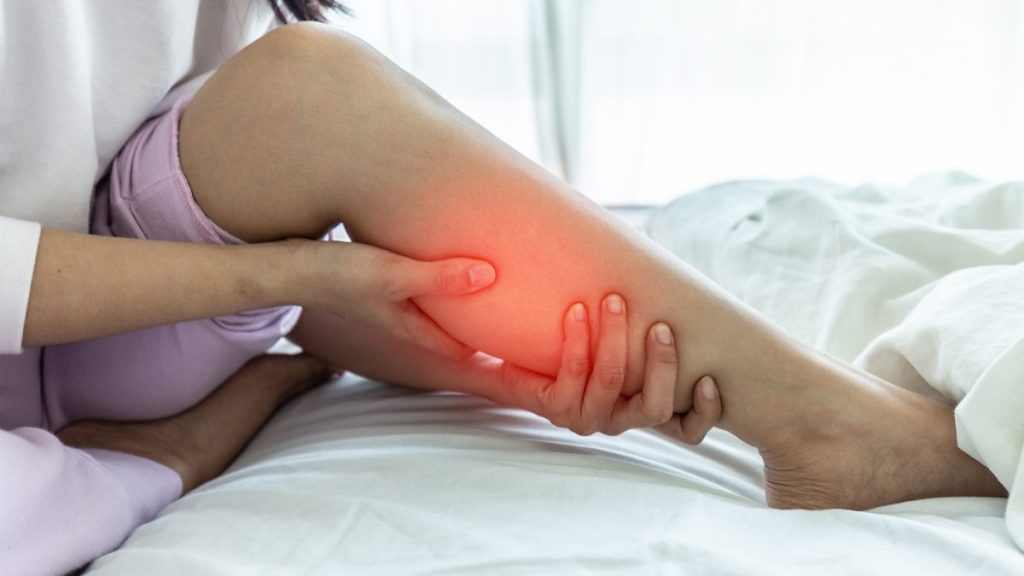
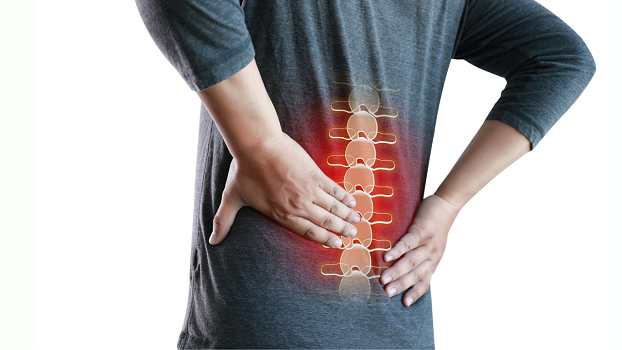

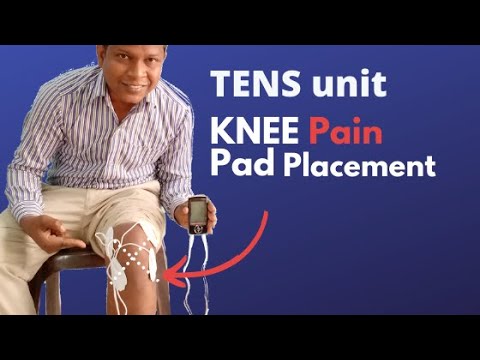


Pingback: How to Use Shiatsu Massager for Neck and Back| A Review
Pingback: Follow Proper Way to Sit at a Desk to Prevent Neck, Back Issues - Physiosunit
Pingback: 5 Easy Cervicogenic Headache Exercises, Tips for Instant Relief - Physiosunit
Pingback: 7 Easy Stretching Exercises for Body Pain Relief - Physiosunit
Pingback: TENS can be wonder for Fibromyalgia Pain|Study - Physiosunit
Pingback: 4 Causes of Neck Pain Left Side| Best Home Remedies - Physiosunit
Thanks
Well said sir, tq